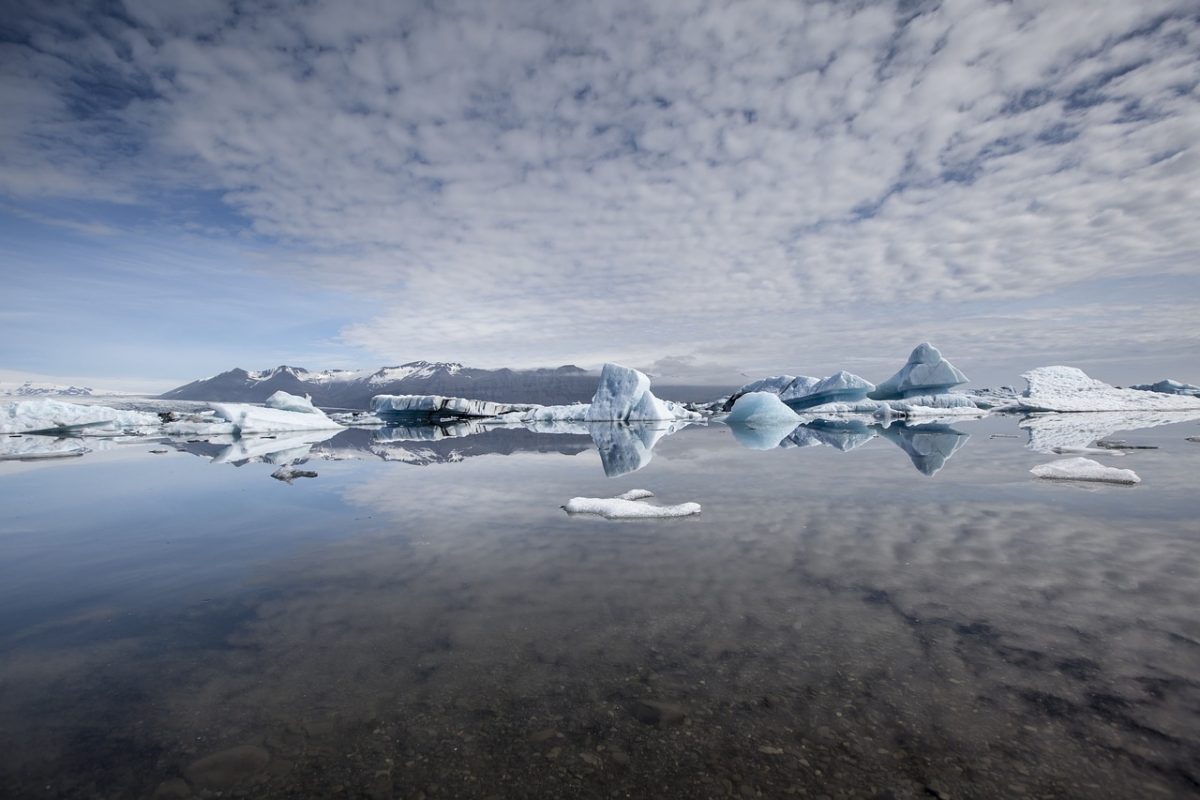Are you looking for day trips in Reykjavik in the winter?
While the days are cold and dark in the winter months, the unique nature of the Nordic country, bathing in elongated sunrises and sunsets and breathtaking winter light, along with bucket-list experiences like snorkeling through tectonic plates, means that there are countless winter day trips from Reykjavik.
Reykjavik is the northernmost capital city in the world and an ideal destination for travelers all year round. In the winter, geothermal pools are all the more welcoming and the natural scenery of the country is highlighted by a twinkling blanket of snow.
Gaze at glacial waters, have an otherworldly experience in an ice cave or see the legendary Icelandic volcanoes that regularly make international news.
There’s an abundance of lovely day trip opportunities from Reykjavik in November, December, January and February.
From sightseeing to ice hiking to snowmobiling, these day trips will make your Iceland winter trip even more memorable!
So, if you’re wondering what else to do besides checking out some awesome sights in downtown Reykjavik, here’s a detailed guide of the best day trips that you can’t miss!
Best day trips from Reykjavik in winter
From exploring the Golden Circle to touring South Iceland to exploring a natural ice cave, there are so many fantastic day trips that you can enjoy in the winter months. It’s frosty, but you’ll stay warm if you layer up!
Golden Circle
The Golden Circle is one of the most popular day trips from the capital of Iceland – and it’s well worth visiting in winter.
The road trip route is named so because it incorporates the country’s most iconic sights and dramatic landscapes, including Kerid Crater, Gullfoss Waterfall, Geysir Hot Springs and Thingvellir National Park.
While there’s obviously so much to see in Iceland, the Golden Circle is a fantastic snapshot of some of the country’s highlights.
On a day tour of the area, you’ll enjoy this diverse landscape while learning about Europe’s most impressive glaciers, thundering waterfalls, and how geysirs are formed along with tales of Iceland’s Viking past.
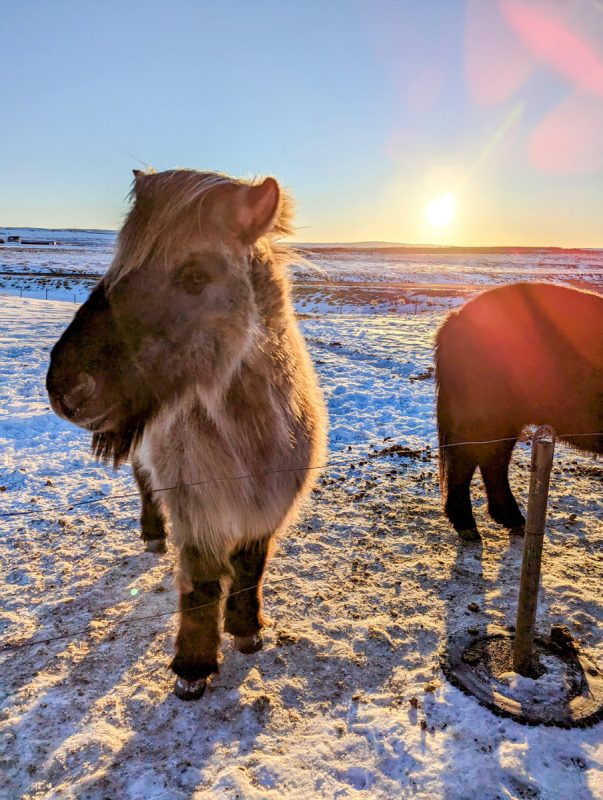
As you drive, you’ll see beautiful frozen landscapes with occasional groups of Icelandic horses.
If you have experience driving in winter conditions, the Golden Circle is drive-able, but if you have any concerns about hiring a car driving on the frosty roads (they are generally well maintained, but they can be perilous in bad weather conditions!).
Plus, you’ll learn about the history and geology of the area from a knowledgeable guide.
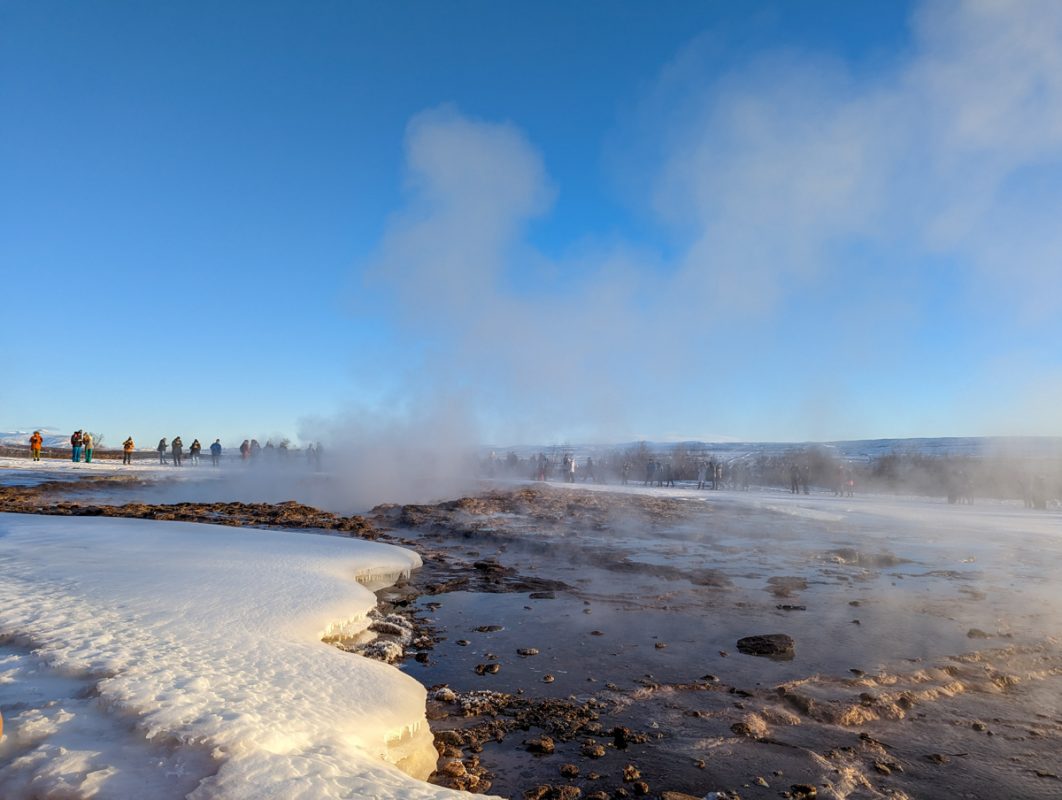
You can do a Golden Circle tour that’ll show you some of the best natural sights of the area, or partake in other tours that include the Secret Lagoon (which are hot springs), the Blue Lagoon or a northern lights tour.
Click through to go to some of the best tours in the area:
- Golden Circle full-day tour with Kerid Crater (this is the one that we did)
- Golden Circle, Kerid, & Secret Lagoon Tour
- Golden Circle and Northern Lights Tour
- Golden Circle & Blue Lagoon Small-Group Tour
South Iceland

The South coast of Iceland is renowned for its stunning waterfalls and black sand beaches. The weather is typically milder than in other parts of the country, so this is the day trip to do if you want slightly warmer weather!
This South Iceland tour includes visiting Seljalandsfoss Waterfall which plummets down 200 metres (60 feet) off a clifftop. You can admire the beautiful waterfall from afar, but not walk behind it in the winter due to the risk of falling ice!
You’ll also see the glorious Reynisfjara black sand beach which is famous for its basalt columns and Vik, the southernmost town in Iceland.
Some south coast tours, like this one, also visit places like Diamond Beach and Jökulsárlón Glacier Lagoon, where you can see the ice breaking away from the glacier into the ice-cold water.
Blue Lagoon or Sky Lagoon
Iceland is renowned for its geothermal waters, and there are a few that you can easily reach from Reykjavik.
Laugardalslaug is a popular complex in the city center, but the Blue Lagoon and Sky Lagoon are other alternatives that are open year-round.
These aren’t necessarily far enough away to warrant a whole day trip, but you can either self-drive or book a tour (tours depart throughout the day and evening) to see either of them.
Blue Lagoon
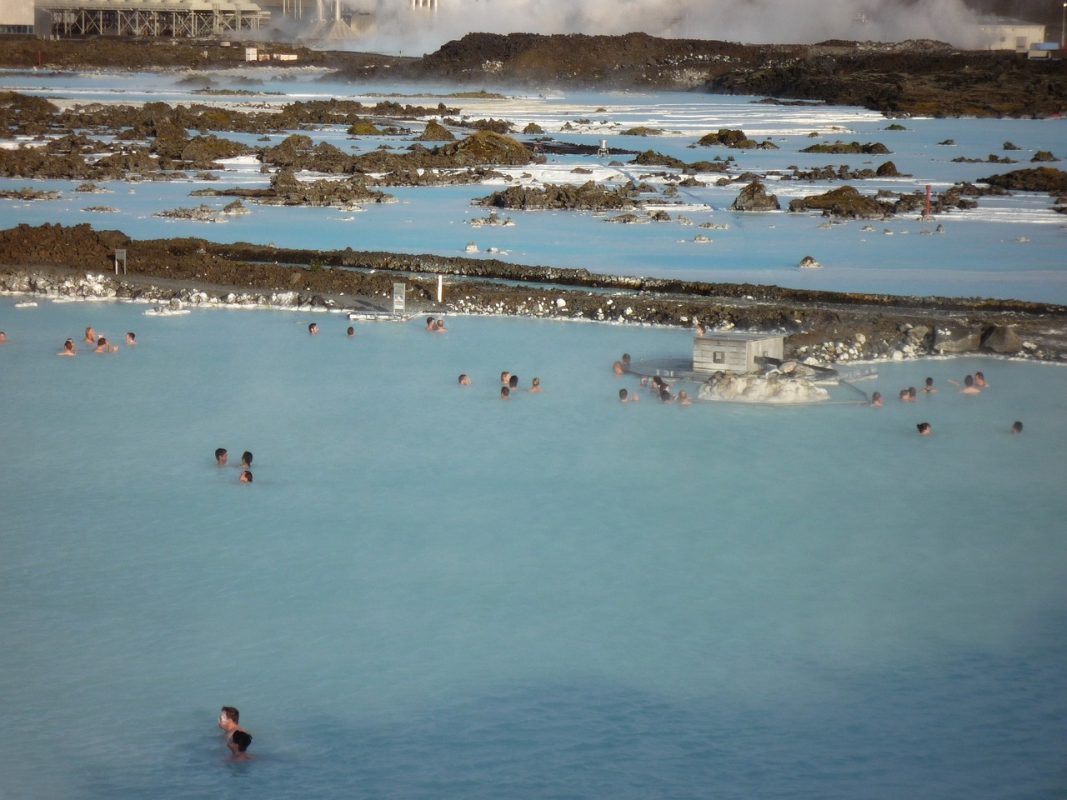
The Blue Lagoon Iceland is a geothermal spa with naturally heated pools of warming milky blue water and healing silica mud.
Situated about an hour from Reykjavik, with breathtaking views of the surrounding lava fields, the thermal pool is one of the most popular places to visit near Reykjavik.
At the Blue Lagoon in winter, you can have a long soak in the mineral-rich waters, apply a silica mud mask and enjoy a drink from the bar.
Their comfort package comes as standard, but you can also book their more exclusive packages that’ll include a robe, slippers, luxurious masks and exclusive changing facilities.
Or, you can book into their luxury private lagoon where you’ll enjoy a more spa-like experience!
We did this Blue Lagoon tour that included transport to and from the thermal pool, a comfort package with a face mask and one free drink and a towel.
You can spend a flexible amount of time at the attraction, taking whatever bus suits you (be sure to check return times). Click here to read more about this tour.
Sky Lagoon
Sky Lagoon Iceland is a luxurious spa situated around a 15 minute drive from Reykjavik.
This unique spa destination and the geothermal lagoon have breathtaking views of the North Atlantic coastline stretching out into the sea.
Visit at sunset for a mesmerizing view, or you might even catch a glimpse of the northern lights in winter!
Northern Lights tour
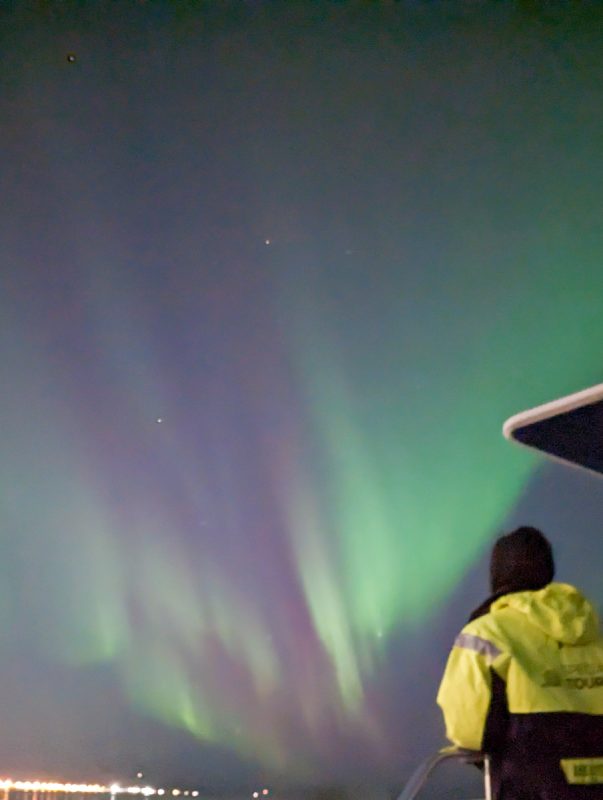
Again, not really a day trip, but an incredible tour departing Reykjavik; if you’re visiting Reykjavik in January, December, November or February, you should at least try to hunt for the northern lights!
The aurora borealis (the official name for the northern lights!) are charged particles of solar wind that hit the atmosphere close to the North Pole and create colourful dashes of light, usually green but sometimes pink.
I took this boat tour which sailed from Reykjavik harbour, away from light pollution, and offered plenty of chances to photograph the natural phenomenon.
We were really lucky and saw a phenomenal display of lights, with bright green and pink flashes, while listening to our expert guide detail exactly why the northern lights occur.
It’s not guaranteed that you’ll see the lights, but you’ll usually get another tour for free if you don’t.
You can see the availability of this boat tour by using the search box below.
There are also bus tours that leave Reykjavik in pursuit of the northern lights. These visit a few different destinations in the countryside near the Icelandic capital; the exact location will depend on the weather forecast of the day!
Click here to read about a bus tour!
Snæfellsnes Peninsula Full-Day Trip

The 55-mile-long Snæfellsnes Peninsula is an unmissable spot for anyone visiting Iceland.
Often known as “Iceland in miniature”, the peninsula boasts puffin colonies, lava fields, black sand beaches, basalt cliffs and spectacular waterfalls.
Tours include stops at places like Kirkjufell which is Iceland’s most famous mountain and the volcano of Ljosufjoll.
There’s also a glacier at Snæfellsjökull that you can admire; seriously, this peninsula basically has all of Iceland’s best attractions!
You can do a full-day tour of the Snaefellsnes Peninsula from Reykjavik; it lasts around 11 hours and is perfect if you want to relax while watching the country unfurl around you.
Silfra Snorkelling Tour
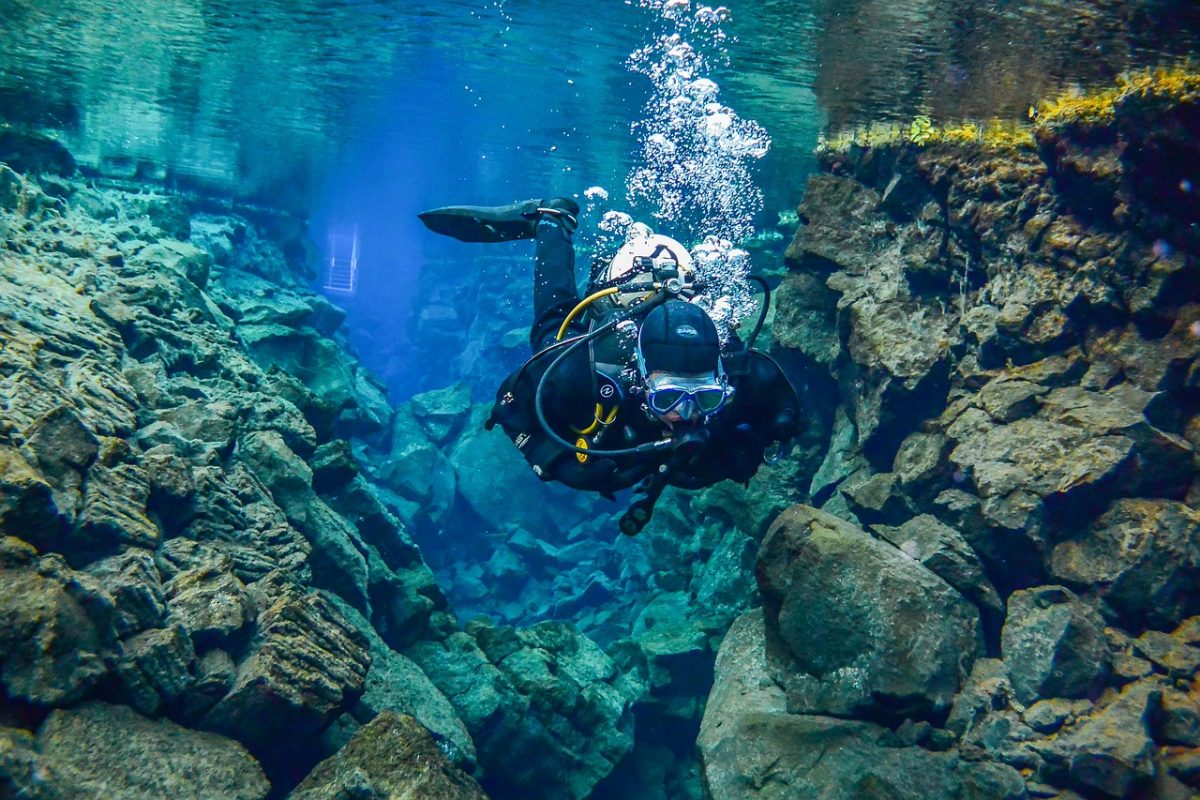
No, snorkeling in Iceland isn’t just for the summer months – and you can do snorkeling tours that run beneath the Eurasian and North American continental plates throughout the seasons.
Thanks to the fact that you wear a dry suit, snorkeling at Silfra is totally possible during the winter – and it’s one of the most impressive natural sites in Iceland.
On this tour, you’ll explore the beauty of Iceland from a whole new perspective, by snorkeling and swimming through glacier meltwater in the Silfra fissure.
After donning your dry suit, you’ll drop into the crystal clear water and swim from one side to another, with the two continental plates of North America and Europe on either side.
This experience takes Þingvellir National Park, a UNESCO World Heritage Site and location that National Geographic called one of the top dive sites in the world.
Check out the availability of the Silfra snorkeling tour using the widget below.
Whale Watching Tours
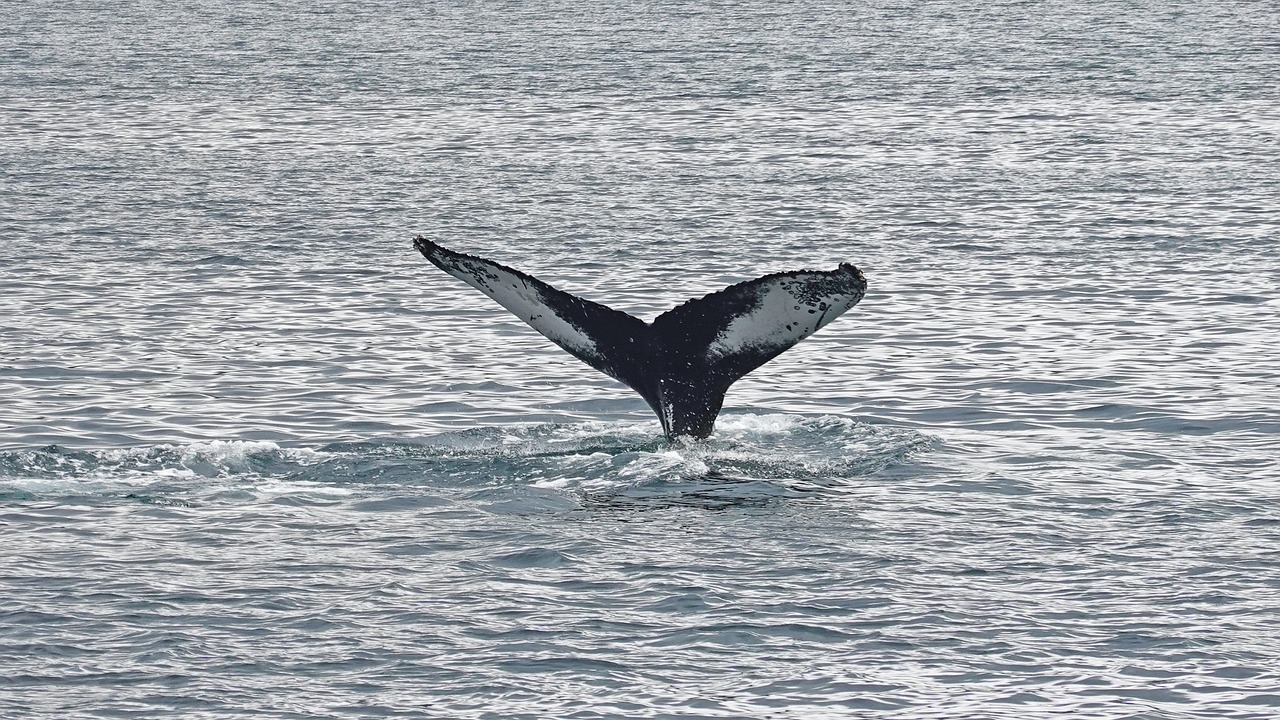
Whale-watching tours leave Reykjavik harbour and provide you with a chance to see some of the most mesmerising creatures in the ocean.
Winter isn’t the best season to find whales in the sea, but if you’re lucky you’ll still see minke, humpack and orca whales.
In fact, this tour still accredits sightings on 80% of winter tours! They also focus on sustainability, ensuring that they move slowly toward the whale habitat to reduce disruption and pollution.
The experienced guides are often marine biology experts, and they’ll explain what you’re looking at AND answer all questions that you have about whales!
Obviously, these tours are weather-dependent, but if you visit during calmer days they are an amazing experience!

Langjökull Glacier
Langjökull Glacier is located about 150 kilometers (93 miles) inland from Reykjavik and is one of the largest in Europe.
The glacier is about about 50 kilometers (31 miles) long and up to 20 kilometers (12 miles) wide, making it Europe’s second-largest glacier (the largest one, Vatnajökull glacier, is also in Iceland!).
Langjökull Glacier reaches up to 1,460 meters above sea level (it’s highest point is Baldjökull) and has a maximum thickness of just under 600 meters.
You can either visit Langjökull Glacier by taking part in a tour from Gullfoss.
Here, the all-terrain bus will pick you up and take you to the glacier, where you can walk in an ice cave and learn about the glacier, including why it is at risk due to global warming.
Click here to read more about it.
There are also snowmobile tours departing from Amazing Basecamp Skjól, which will give you a chance to get up close and personal to the glacier as you explore it in your own independent vehicle.
Click here for more information.
Alternatively, you can take part in a Golden Circle tour that also includes visiting Langjökull Glacier. This will be slightly longer than your standard Golden Circle tours, taking 11 hours, but it packs a lot in and offers a truly unique Icelandic experience.
Click here to read more about it.
Katla Ice Cave and Super Jeep Tour
This tour departs from Reykjavik or Vik.
You’ll hike across Mýrdalsjökull Glacier, Iceland’s fourth largest glacier, and ultimately reach Kötlujökull where you can descend into Katla Ice Cave.
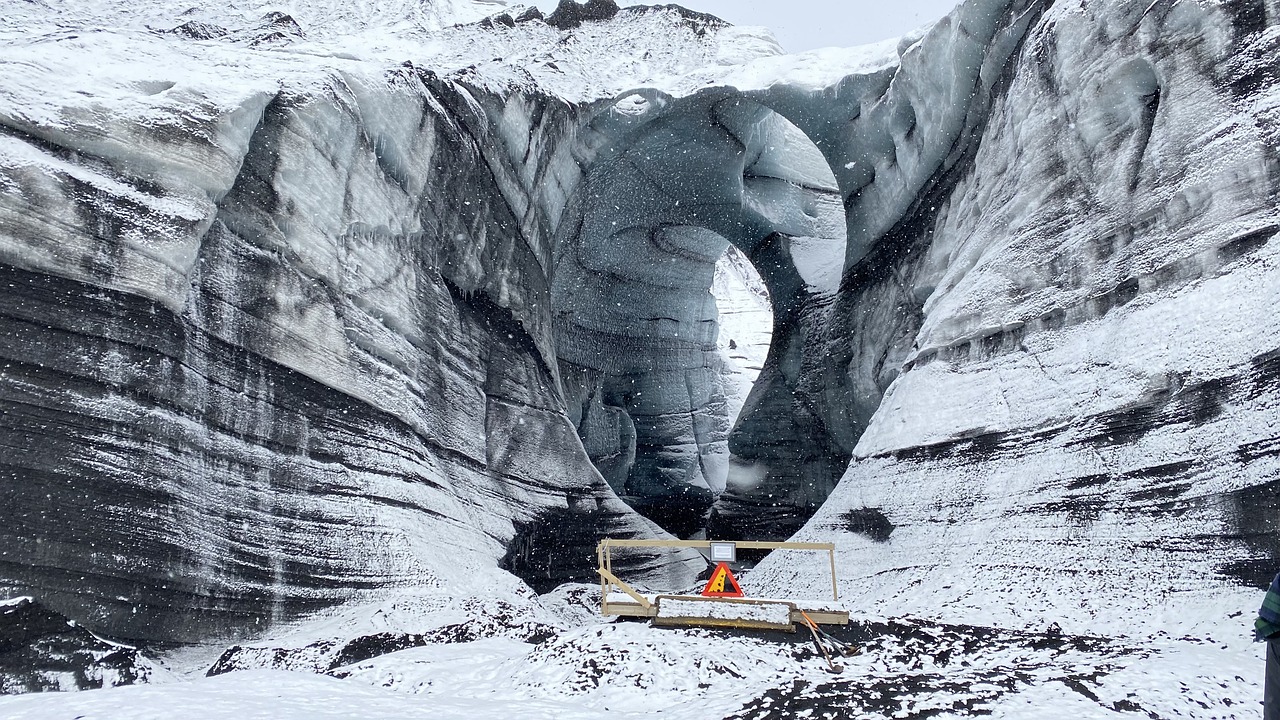
This is a mesmerizing cavern of all different shades of blues and blacks, and is one of the best winter activities in Iceland; they’re only open from mid-November to March, so you certainly can’t visit them in the summer season!
It’s difficult to visit these ice caves independently, making doing this one of the must-do winter tours from Reykjavik or Vik.
Crampons are provided, but make sure that you wear very seasonally-appropriate clothing and comfortable walking shoes – you’re in Arctic conditions in the winter, after all!
Meradalir Volcano
One thing that Iceland is known for is erupting volcanoes. In fact, I remember when Eyjafjallajökull erupted in 2010 – I was in Mexico at the time and I wasn’t able to get home for another 10 days – all air-based Mexico transportation was shut down, despite it being over 7,000 kilometres away!
Meradalir Volcano, located near the Kevaflik Airport, is one of the most active volcanoes in Europe.
It has been erupting continuously since 1805, and more recently in August 2022.
Meradalir has produced some spectacular eruptions over the years, with ash frequently reaching as far away as Denmark!
It hasn’t erupted since August 2022, but as that was so recently, visiting provides a fascinating look at what volcanic eruptions mean for the environment.
On this day trip (with an expert guide), you’ll hike by Fagradalsfjall Volcano, see the lava flow from the volcano itself, and trek through the Geldingadalur Valley, learning about how volcanic eruptions have shaped the landscape as you go.
Your knowledgeable guide will detail everything you’ve ever wanted to know about volcanic eruptions and how the country is still being formed thanks to its volcanoes and other geological features.
It’s an incredible snapshot into how Iceland is still being formed by its natural wonders, and going with an expert guide will help you to understand the rugged backdrop of Iceland a little better.
Although you can visit Meradalir Volcano throughout the year, these tours do operate throughout the winter months.
Click here to read more about this tour.
Ice climbing at Sólheimajökull Glacier
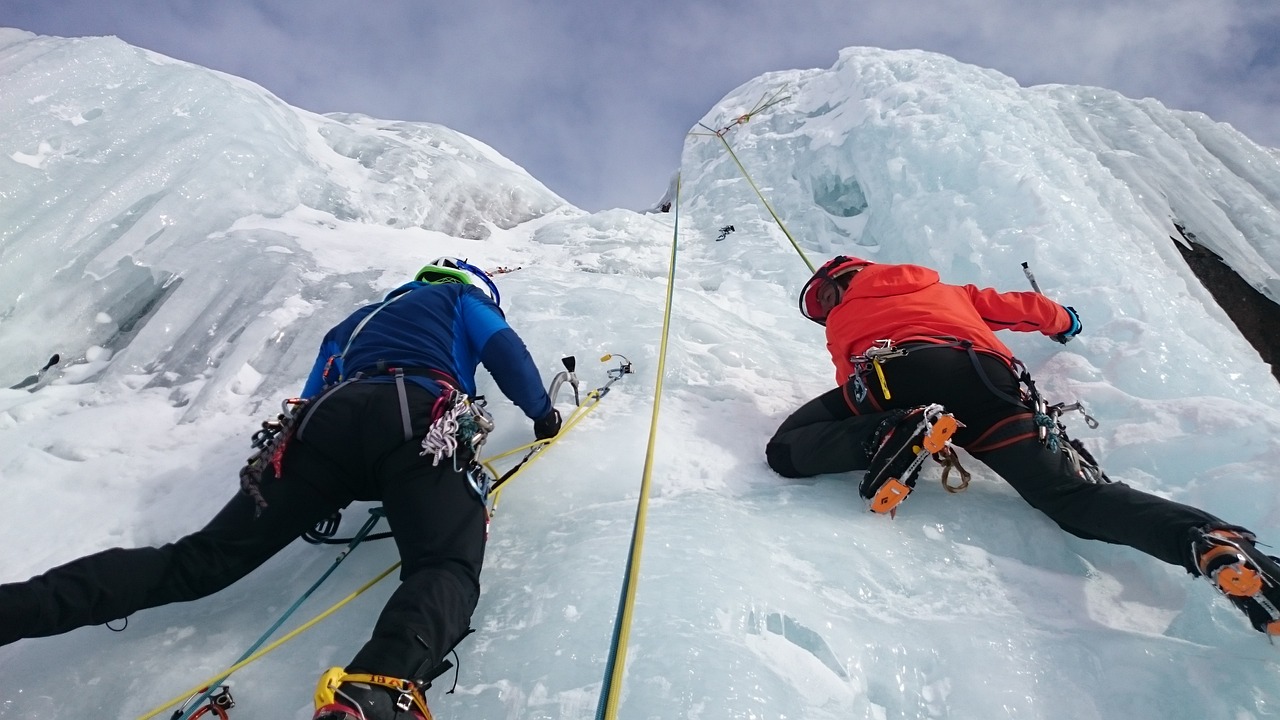
This is one for the adventurers!
You can do an ice climbing experience at Sólheimajökull Glacier. You’ll walk up to an ice wall and, saddled up with the correct gear, have the chance to summit it yourself.
The glaciers are ever-changing, meaning that you’ll have a completely unique experience whatever day you visit.
The tour includes a knowledgeable guide, who is fully versed on all of the safety procedures of ice climbing; they’ll also give you some information about the glacier.
You’ll also be provided with all the gear you need to successfully and safely climb in the ice.
Transportation from Reykjavik isn’t included, but if you don’t have your own transport, you can add it on for an extra cost.
How to book these day trips from Reykjavik
Due to the fairly temperamental weather conditions in Iceland in winter, I would only recommend driving if you’re used to navigating the roads in snow and ice.
Remember, even if it’s not snowing in Reykjavik, it’s likely to be snowing elsewhere in the country!
Plus, some of these tours, like snorkeling at Silfra, ice climbing and taking a 4WD bus onto the glacier are not accessible independently.
If not, guided tours run to all the places listed above, and you can browse them on Get Your Guide.
Other things to do in Reykjavik

There are plenty of other fun activities to do in Reykjavik throughout the winter, including:
- taking the elevator to the top of Hallgrímskirkja church
- exploring some of the best museums, including the National Museum of Iceland, the Saga Museum and the Whale Museum
- seeing the whole country at the Fly Over Iceland experience
- enjoying the wonders of Iceland at Perlan
- learning about the unique land on a walking tour
Where to stay in Reykjavik
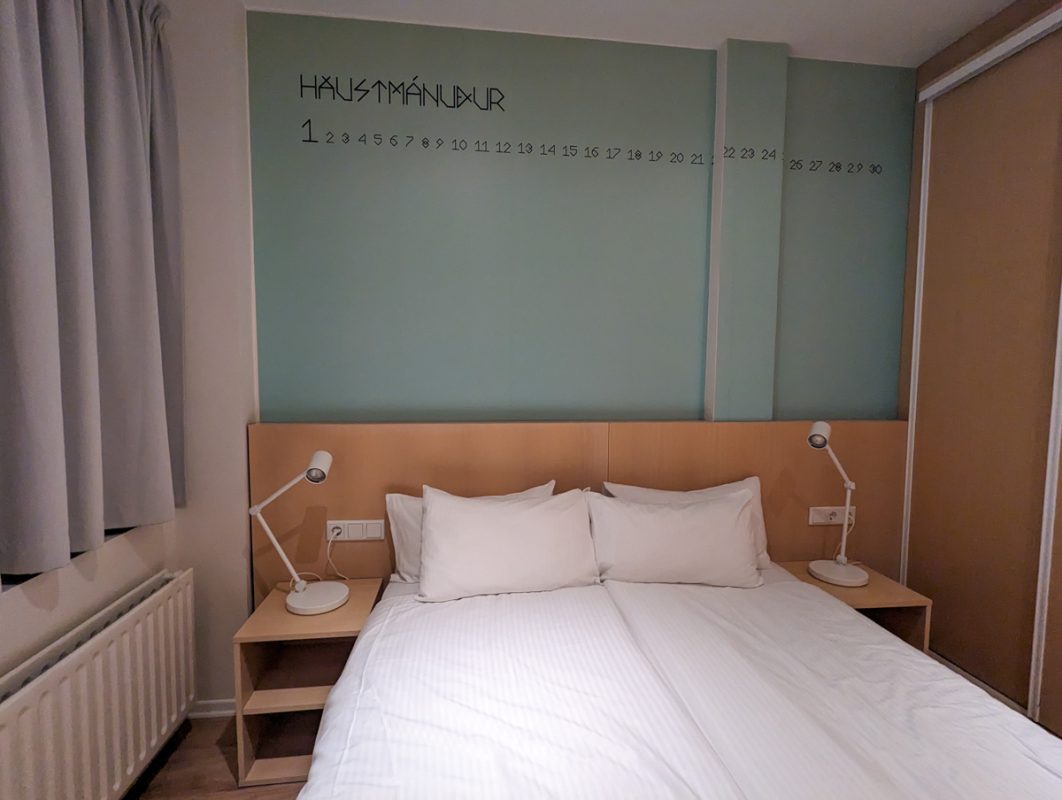
We stayed at the Reykjavik Lights Hotel, which is about a half hour walk from downtown Reykjavik. This was a little bit too far in very icy conditions, but it was quite a lot more affordable than other hotels in the city!
It had minimalist, chic rooms with Nordic vibes, amazing power showers and powerful radiators that heated the room up perfectly.
The breakfast spread was tasty, with plenty of veggie options, and the staff were friendly and helpful.
Reykjavik day trips FAQ
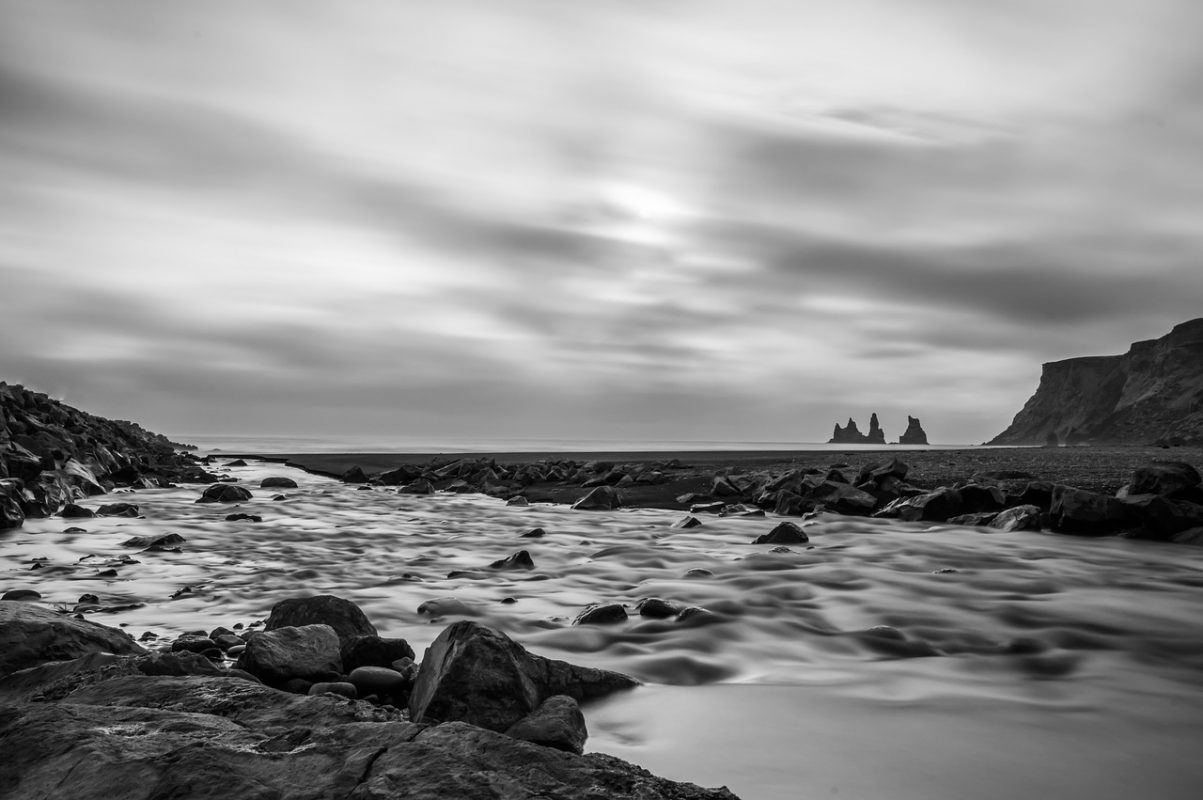
Should I stay in Reykjavik and do day trips?
You certainly can stay in Reykjavik and do day trips into the surrounding areas; you can see a lot of the south part of Iceland this way, and it’s one of the best ways to see the country in the winter.
Is it safe to self-drive in Iceland in winter?
If you’re used to driving in the snow, you might be ok driving in Iceland in the winter – people certainly do – but there’s always a risk of being caught in a blizzard – so it’s generally safer to go on a tour.
Is it easy to get around Reykjavik without a car?
Yes, Reykjavik is quite walkable, and there is also a decent bus service that connects the city to its suburbs. Reykjavik can have a surprising amount of traffic in peak hours, so you might want to avoid driving if you can.
What do you need to pack for winter day trips from Reykjavik?
For winter day trips, make sure that you pack warm clothes, including ski gear if possible, thermals and fleeces, along with thick socks and waterproof boots so your feet will stay warm! Depending on the trip, you might need special snow gear too.
Best Reykjavik winter day trips
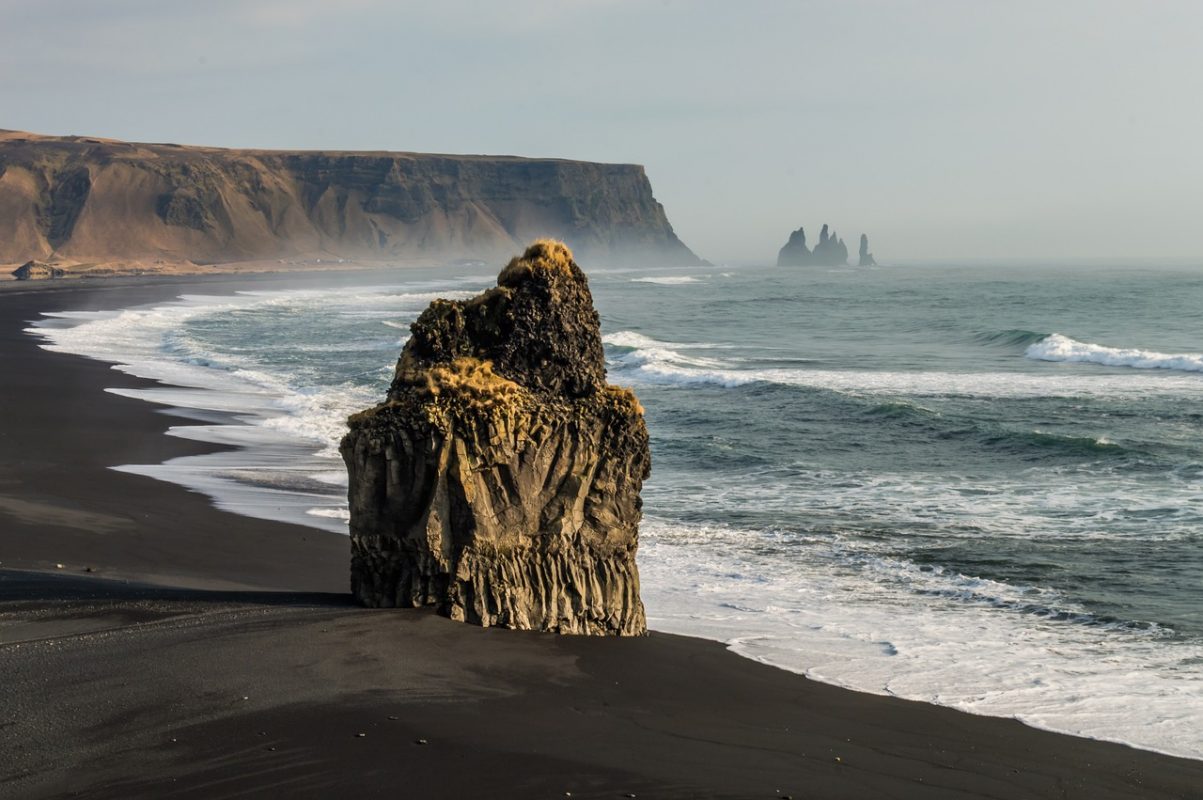
Whether you want to see vistas of Iceland’s biggest volcanoes, watch the country sparkle in icy winter conditions or soak in warm water at the many lagoons near Reykjavik, these day trips are incredible experiences.
All of these Iceland day trips are bookable on Get Your Guide.

